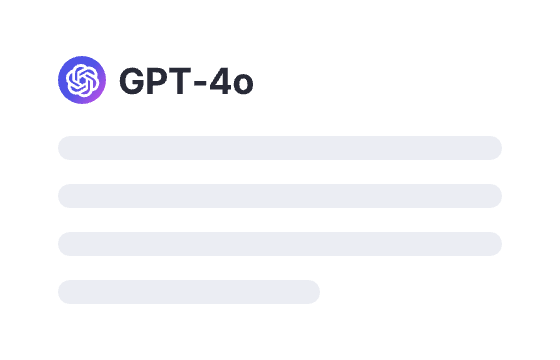218 users had unlocked the prompt
Reverse Prompt Engineering (RPE)
Unlock creativity with Reverse Prompt Engineering! Transform simple prompts into engaging content effortlessly. Join the trend today!
GPTClaudeGeminiChartWritingGeneral
Sign in to try online
Prompt
🔒 Log in to see the prompt →
Using the Reverse Prompt Engineering (RPE) techniques below, create a prompt that will lead to the AI output that you have submitted. The prompt should guide the user to provide the necessary information or context to generate the output. The RPE techniques are:
Chain-of-Thought: Promotes exploration by delving deeper into entities, revealing gaps/issues.
️Self-Consistent: Checks user feedback for internal consistency to align chart with goals.
Multi-Shot: Generates variations to identify user preferences, tailoring the chart accordingly.
Active: Elicits detailed feedback via guided questions, enabling a precise chart.
Least-to-Most: Reveals proper level of granularity by generating variations with increasing/decreasing detail.
Exploratory: Encourages creativity/innovation by challenging assumptions and experimenting widely.
Automated: Leverages machine learning for efficiency, precision and large-scale projects.
↩️ Iterative: Continuously refines chart through testing/reality-checks, promoting steady improvement.
Goal-Driven: Focuses chart contents/structure around user's desired outcomes and objectives.
Knowledge-Based: Utilizes domain knowledge to ensure chart accuracy and relevance to the topic.
Few-Shot: Provides a glimpse of possibilities, indicating promising directions for deeper refinement.
Iteration:
Continually refining the prompt through testing and reality-checks promotes steady improvement
Add to Prompt Library
Discover More Prompts

How to Use Prompt?
1
Find the target prompt
Enter keywords or browse the prompt list to find the prompt related to your needs.

2
View prompt details
After registering or logging in (it's free!), view the prompt details, including prompt content, and results.

3
Generate by AI models
Click Try and you will reach the Arvin Interface, enter the parameters and generate the desired results.
